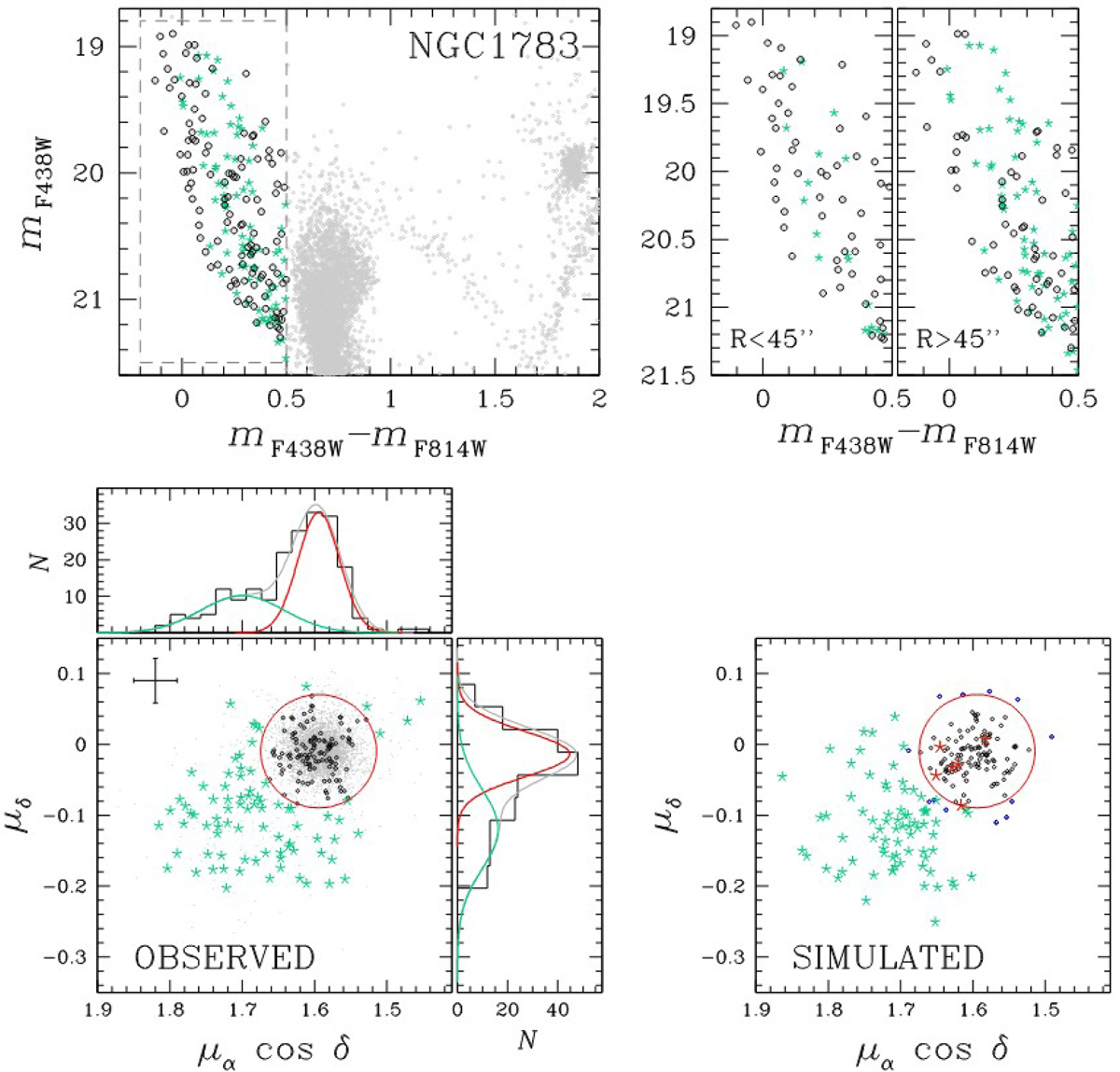Fig. 20.

Download original image
Procedure to identify the probable stars of NGC 1783 on the blue, bright side of the MS. Top: reproductions of the CMDs of NGC 1783 of Fig. 16. Right panels are zoomed-in views of the CMD region on the bright-blue side of the MSTO (dashed rectangle in the top-left panel) for stars with radial distances from the cluster center smaller and larger than 45 arcsec. Bottom: proper-motion diagram of stars plotted in the top-left panel (left). The red circle separates stars with a cluster-like motion from the bulk of field stars. Black points and aqua-starred symbols mark the selected bright-blue stars. The corresponding histogram distributions for μα cos δ and μδ are also represented on the top and right side of the panel. The best fit bi-Gaussian functions are represented with gray lines, and the two Gaussian components are colored aqua and red. The bottom-right panel shows the simulated proper motions for cluster members and field stars. Black and blue dots indicate NGC 1783 stars with cluster-like and field-like proper motions, respectively, while red color is used to distinguish field stars with cluster-like proper motions from the remaining field stars (aqua starred symbols).
Current usage metrics show cumulative count of Article Views (full-text article views including HTML views, PDF and ePub downloads, according to the available data) and Abstracts Views on Vision4Press platform.
Data correspond to usage on the plateform after 2015. The current usage metrics is available 48-96 hours after online publication and is updated daily on week days.
Initial download of the metrics may take a while.


